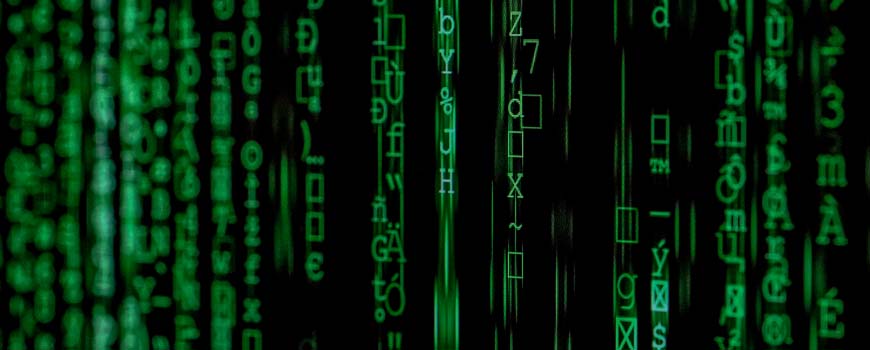Alarm Panel Basics: When Should You Use Encyrpted Sensors?

With alarm technology rapidly advancing, it’s important that your customers' systems are up to date. This is especially important now that alarm panels are coming out with encrypted sensor technology that allows for a much safer and more secure alarm system.
So what are encrypted sensors and when should you use them? That’s what we’re going to discuss in this blog post.
But before we dive into this topic, make sure you read about our upcoming 2GIG webinar: How to Get Started With Alarms. This is a great opportunity to learn about the alarm panel industry and ask your burning questions. Also, did I mention there was free stuff? Check out our blog post here to learn more.
What Are Encrypted Sensors?
When wireless sensor technology first came to the world of alarm panels, it was a pretty new thing. We didn’t know a whole lot about it. But as the years have advanced, this technology has grown safer and much more reliable.
In the beginning, there was no wireless signal encryption. This means the sensors were openly broadcasting their signals to the panel. Conversely, the panels were listening for any signal on a particular frequency.
Imagine someone standing on your front porch with a megaphone shouting, “Door Panel 1 to alarm panel: the front door is open!” This is problematic for a variety of reasons. But it’s even worse when you realize that just anyone can come up to your porch with a megaphone shouting a variety of commands and tricking the alarm panel.
Encryption fixes this issue by forcing your alarm panel and sensors to communicate in an encrypted language to ensure effective, private, and fool-proof communication. Your panel now only listens to the encrypted broadcasts sent by your sensors.
Encrypted sensors are obviously the safer route. I’d like to say that you should always use encrypted sensors in every situation, but the real answer is a bit more nuanced than that.
When to Use Encrypted Sensors
You should use encrypted sensors whenever you can. These should always be your go-to solution for choosing sensors for your clients' alarm systems. If you’re setting up a new system, there’s no reason not to use encrypted sensors. The only time to consider alternative solutions is when you’re maintaining a legacy system. Not all encrypted sensors are backwards-compatible, meaning there’s a chance you may still need to use unencrypted sensors with some alarm panels.
So if you’re working on an older system, how can you know if it’s compatible with encrypted sensors? The only way you can know is by asking your distributor. At Nelly’s Security, we sell two brands of alarm equipment: 2GIG and Qolsys. Below is everything you need to know when deciding when to use encrypted sensors based on these manufacturers.
2GIG eSeries Encrypted Sensors
When you’re setting up a new 2GIG system, you’re most likely either going to be using the 2GIG GC2e or the 2GIG EDGE. Both of these alarm panels are fully compatible with the 2GIG eSeries encrypted sensors. That said, when you’re building a new system from scratch, it’s always going to be best to use encrypted sensors.
If you’re replacing an older panel with a GC2e or EDGE panel, you have a couple of choices. You could either replace all of their legacy sensors with the newer eSeries sensors to make sure their system is fully encrypted. But since the GC2e and the EDGE are backwards compatible with older 2GIG sensors, you can also just install the panel now and upgrade the rest of their system slowly over time.
If you’re installing or maintaining a 2GIG GC2, GC3, or any other 2GIG alarm panel prior to the 2019 eSeries update, then you’ll need to stick with the unencrypted legacy sensors. Again, the eSeries sensors are not backwards compatible, so they will not work with older 2GIG panels. This is really the only time you would ever need to consider using legacy sensors.
Qolsys S-Line and PowerG Encrypted Sensors
When you’re installing a new Qolsys system, you’re probably going to be installing the IQ Panel 2+ or 4. In that case, you have a couple of options available to you when it comes to encrypted sensors. First, you have the S-line encrypted sensors, which are the equivalent of the 2GIG eSeries sensors. Your second option is PowerG sensors, which are double encrypted.
PowerG, unlike standard alarm panel sensors, communicates in two ways. The sensors talk to the panel, but the panel also talks back to the sensors. Regardless of the direction of communication, there are two layers of encryption happening here.
If you’re working with an older Qolsys panel, you don’t have to revert to unencrypted sensors. Unlike 2GIG’s eSeries, S-Line sensors are fully backwards compatible. That means you’ll be able to set up S-Line sensors even with older unencrypted sensors. Note that if the panel doesn’t support encryption, then the sensors won’t be encrypted. They will simply function as standard sensors with no encryption. But it’s still better to set up these systems with encrypted sensors for future-proofing purposes.
Conclusion
So to sum up, always use encrypted sensors when you can. Cyber attack technology is evolving just as quickly as alarm panel technology. By keeping your alarm tech in the past, you’re opening yourself and your customers up to unwanted attacks and jams. Click the buttons below to shop for all 2GIG and Qolsys encrypted sensors at Nelly’s Security!

